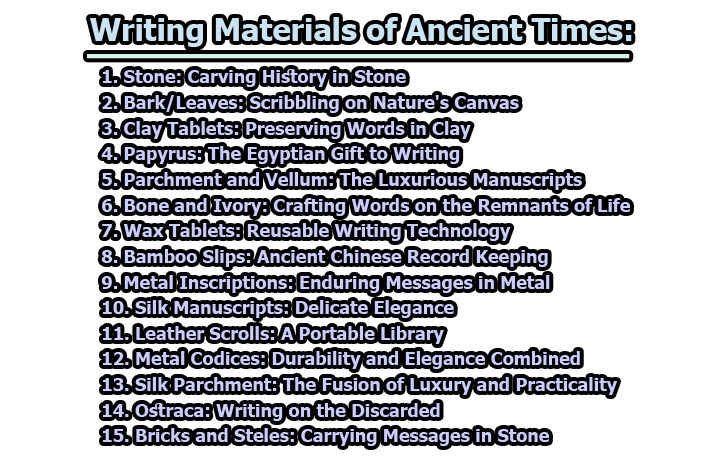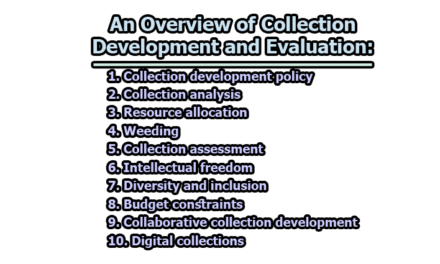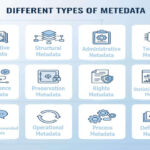Writing Materials of Ancient Times:
Throughout human history, the desire to record and communicate information has been an integral part of our existence. From the dawn of civilization, humans have relied on various materials to preserve their thoughts, ideas, and experiences for future generations. In ancient times, when sophisticated technology was absent, our ancestors ingeniously crafted writing materials from the resources available to them. This article delves into the writing materials of ancient times.
1. Stone: Carving History in Stone: In the ancient period, when early humans lived in caves, stone emerged as a durable and reliable writing medium. Symbolic inscriptions etched on stones provided a means of communication and record-keeping that transcended the limitations of spoken language. An iconic example of ancient stone inscriptions is the Asokan edicts, engraved on pillars and rocks during the reign of Emperor Ashoka in India. One of the most famous stone artifacts is the Rosetta Stone, which played a vital role in deciphering ancient Egyptian hieroglyphics.
Stone tablets were often arranged systematically, stacked upon one another in designated rooms, which served as early archives. This organization allowed for easy reference and retrieval of information, laying the foundation for knowledge management systems that would evolve over time.
2. Bark/Leaves: Scribbling on Nature’s Canvas: Bark and leaves were widely used as writing surfaces in ancient times. Bark, the protective outer layer of trees, provided an abundant and accessible material for jotting down information. Additionally, palm leaves were a popular choice, especially in regions where palm trees were prevalent. To protect the writings from insects and decay, a mixture of lampblack, oil, and Salicylic acid salt was often applied.
The simplicity and versatility of bark and leaves as writing materials made them commonplace in many ancient civilizations. The lightweight and portable nature of these materials facilitated communication across vast distances, enabling the exchange of knowledge and ideas between distant societies.
3. Clay Tablets: Preserving Words in Clay: Clay tablets were an essential writing medium in the ancient Near East, particularly in Mesopotamia. Made from mud, clay tablets were formed by moistening and kneading the clay into dough, which was then inscribed with a stylus while still soft. Once the text was etched, the tablet was allowed to harden, providing a robust and long-lasting medium for recording important information.
Due to their fragility, clay tablets were carefully preserved in large boxes or clay envelopes to protect them from damage. These ancient archives have been invaluable to modern scholars in deciphering the history, literature, and administrative records of ancient civilizations.
4. Papyrus: The Egyptian Gift to Writing: Papyrus, derived from the papyrus plant’s marrow, was one of the most important writing materials in ancient Egypt. The inner fibers of the papyrus plant were woven together to create a smooth surface suitable for writing with a reed pen. To facilitate handling and storage, papyrus sheets were glued into long strips and then rolled on wooden cylinders, often wrapped in skins or cloth for added protection.
This lightweight and durable writing material enabled the ancient Egyptians to produce vast amounts of written texts, ranging from administrative records to literary works. The proliferation of papyrus allowed knowledge to flourish and be disseminated across the ancient world.
5. Parchment and Vellum: The Luxurious Manuscripts: Parchment and vellum, developed around 190 B.C. in Pergamum, Asia Minor, offered superior writing surfaces compared to earlier materials. Vellum, made from the skin of young calves cleaned of hair, fat, and muscle, was especially prized for its exceptional quality and durability. Parchment, though of slightly lesser quality, was still a popular choice for writing manuscripts and bindings.
The creation of parchment and vellum required skilled craftsmanship, making them the preferred choice for luxurious manuscripts and important documents. These materials played a pivotal role in preserving religious texts, scientific knowledge, and historical records of great civilizations.
6. Bone and Ivory: Crafting Words on the Remnants of Life: Bone and ivory were used as writing materials by various ancient civilizations. In regions where animals were hunted for food, their bones and ivory tusks were repurposed as writing surfaces. The early humans would engrave symbols and markings on these materials using sharp tools or rocks. While not as common as other writing materials, bone and ivory provided a unique and visually striking medium for preserving important information and artistic expressions.
7. Wax Tablets: Reusable Writing Technology: Wax tablets were widely used in ancient Greece and Rome as a reusable writing surface. These tablets consisted of wooden frames filled with a layer of wax, and scribes would use a stylus to write on the soft wax surface. When the message was no longer needed, the wax could be smoothed over, erasing the previous writing, making it an eco-friendly and practical writing medium for everyday use.
8. Bamboo Slips: Ancient Chinese Record Keeping: In ancient China, bamboo slips served as an important writing material for official documents and historical records. Thin strips of bamboo were flattened and then inscribed with intricate Chinese characters using brushes and ink. These bamboo slips were then tied together with strings to create scroll-like documents that could be easily transported and stored. The discovery of bamboo slips at archaeological sites has contributed significantly to our understanding of ancient Chinese history and culture.
9. Metal Inscriptions: Enduring Messages in Metal: Metal inscriptions, primarily engraved on copper, bronze, or gold, were used by various ancient civilizations, such as the Indus Valley, Mesopotamia, and Egypt. Metal offered unparalleled durability and permanence, ensuring that important texts and records could withstand the test of time. The messages engraved on metal were often religious or historical in nature, reflecting the significance of the content.
10. Silk Manuscripts: Delicate Elegance: In ancient China, silk was used as a prestigious writing material for important texts and artistic works. Silks were often adorned with intricate paintings and elaborate calligraphy, transforming writing into an exquisite art form. Due to the delicate nature of silk, these manuscripts were mostly preserved in protective cases and treated with great care, making them valuable artifacts that have survived through the ages.
11. Leather Scrolls: A Portable Library: In ancient times, leather scrolls were widely used as a flexible and portable writing material. Tanned animal hides, such as those from sheep, goats, or cattle, were cut into long strips and rolled up to create scrolls. Scribes would use ink and brushes to meticulously inscribe texts on these scrolls. Leather scrolls were popular in many cultures, including ancient Egypt, Greece, and the Roman Empire. They were used to record religious scriptures, literature, legal documents, and historical accounts.
12. Metal Codices: Durability and Elegance Combined: Metal codices, also known as metal books, were a unique and opulent form of writing material in ancient times. They were made by inscribing texts onto thin metal sheets, typically made of gold, silver, or bronze. These metal sheets were then bound together to form a book-like structure. Metal codices were often used for religious texts, royal decrees, and significant historical events. Their sturdy construction ensured their preservation over centuries, and they exemplified the artistic craftsmanship of their time.
13. Silk Parchment: The Fusion of Luxury and Practicality: Silk parchment was a luxurious writing material that emerged during the Byzantine era. It combined the elegance of silk with the practicality of parchment. To create silk parchment, a thin layer of silk fabric was coated with a solution made from boiled animal bones, making it smooth and suitable for writing. Silk parchment was mainly used for religious texts, royal decrees, and high-quality manuscripts, showcasing the wealth and refinement of the Byzantine Empire.
14. Ostraca: Writing on the Discarded: Ostraca were broken pieces of pottery or limestone used as an alternative writing material in ancient Egypt, Greece, and other regions. These broken fragments, typically leftovers from daily life, were used as scratchpads to record temporary information, such as lists, calculations, or rough drafts. Ostraca were inexpensive and readily available, making them a convenient and eco-friendly medium for jotting down notes and ideas.
15. Bricks and Steles: Carrying Messages in Stone: In certain ancient societies, bricks and steles (standing stone slabs) were used as writing materials for inscriptions. Bricks, with their flat surface, were ideal for inscribing texts using chisels or other carving tools. Steles were often erected as monuments, displaying important information such as laws, treaties, and historical events. These enduring stone inscriptions provided a tangible link to the past, offering insight into the lives and cultures of ancient civilizations.
In conclusion, the exploration of ancient writing materials reveals the ingenuity and resourcefulness of our ancestors in their quest for knowledge preservation and communication. From the durability of stone inscriptions to the portability of papyrus scrolls, each material served a crucial role in shaping the course of human history. These writing mediums not only recorded historical events, religious texts, and literary works but also embodied the cultural and technological advancements of their respective civilizations. As we marvel at the sophisticated technologies of the present, it is essential to acknowledge and appreciate the humble origins of writing materials, which laid the foundation for the vast repository of knowledge we possess today. These ancient relics serve as a testament to the enduring human spirit and our continuous pursuit of understanding the world and passing wisdom to future generations.
Frequently Asked Questions [FAQs]:
What were the most common writing materials used in ancient times?
In ancient times, the most common writing materials included stone, clay tablets, papyrus, bark/leaves, and parchment/vellum. Stone was used for its durability and permanence, while clay tablets were prevalent in Mesopotamia. Papyrus was a popular choice in ancient Egypt due to its smooth surface, and bark/leaves were widely used for their accessibility. Parchment and vellum, made from animal skins, were reserved for important manuscripts and luxurious writings.
How were stone inscriptions created in ancient times?
Stone inscriptions were created by carving symbols or texts onto the surface of stones using sharp tools or rocks. Skilled craftsmen carefully chiseled the desired characters, creating durable and long-lasting engravings. Stone inscriptions, such as the Asokan edicts and the Rosetta Stone, played a significant role in recording historical events and royal decrees.
What were clay tablets used for in ancient civilizations?
Clay tablets were widely used in ancient civilizations, especially in Mesopotamia, for various purposes. They were primarily used to record administrative, economic, and legal information, as well as religious texts and literature. These clay tablets were inscribed with cuneiform script using a stylus while the clay was still soft and then allowed to harden for preservation.
How were papyrus sheets prepared for writing?
Papyrus sheets were made from the inner fibers of the papyrus plant. The plant’s marrow was cut into thin strips, which were then placed side by side and pressed together to create a smooth surface. Writing with a reed pen and ink was done on this surface, and for ease of handling and storage, papyrus sheets were glued into long strips and rolled onto wooden cylinders, sometimes wrapped in skins or cloth.
What were parchment and vellum made from, and why were they highly valued?
Parchment and vellum were made from animal skins, typically from young calves or other animals. The skins were cleaned of hair, fat, and muscle, resulting in a smooth and durable surface suitable for writing. Parchment and vellum were highly valued for their quality, making them the preferred choice for luxurious manuscripts, religious texts, and important documents due to their durability and elegance.
Were there any eco-friendly writing materials in ancient times?
Yes, some writing materials in ancient times were eco-friendly. For instance, ostraca, which were broken pieces of pottery or limestone used for jotting down temporary information, were considered eco-friendly as they utilized discarded materials. Additionally, wax tablets allowed for reusable writing, as the wax surface could be smoothed over and used again after the previous writing was no longer needed.
How were metal codices created, and what were they used for?
Metal codices, also known as metal books, were made by inscribing texts onto thin metal sheets, often made of gold, silver, or bronze. These sheets were then bound together to create a book-like structure. Metal codices were used for recording significant religious texts, royal decrees, and important historical events. They were prized for their durability and opulent appearance, often showcasing the wealth and artistic craftsmanship of the time.
What were the different uses of leather scrolls in ancient societies?
Leather scrolls were utilized for various purposes in ancient societies. They were commonly used to record religious scriptures, historical accounts, legal documents, and literary works. Their flexibility and portability made them a convenient choice for carrying and storing important information, and they were widely used in cultures across different regions and time periods.
How did ancient civilizations use silk parchment for writing?
Silk parchment was a luxurious writing material that emerged during the Byzantine era. It involved coating a thin layer of silk fabric with a solution made from boiled animal bones, providing a smooth surface suitable for writing. Silk parchment was primarily used for recording religious texts, royal decrees, and high-quality manuscripts, showcasing the wealth and refinement of the Byzantine Empire.

Library Lecturer at Nurul Amin Degree College










